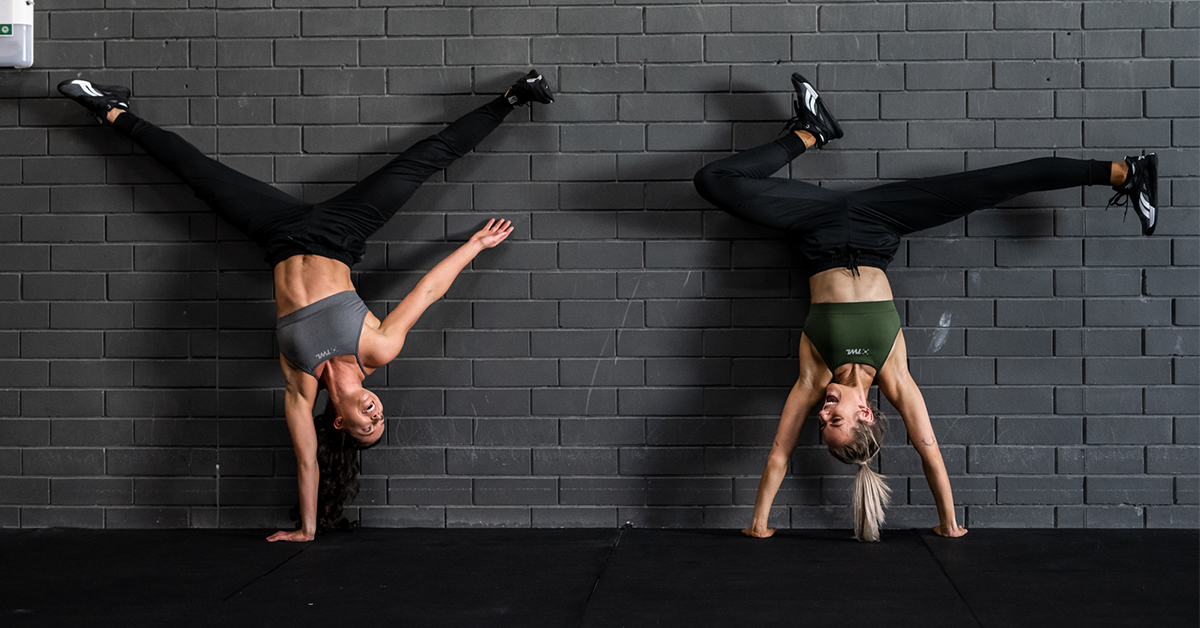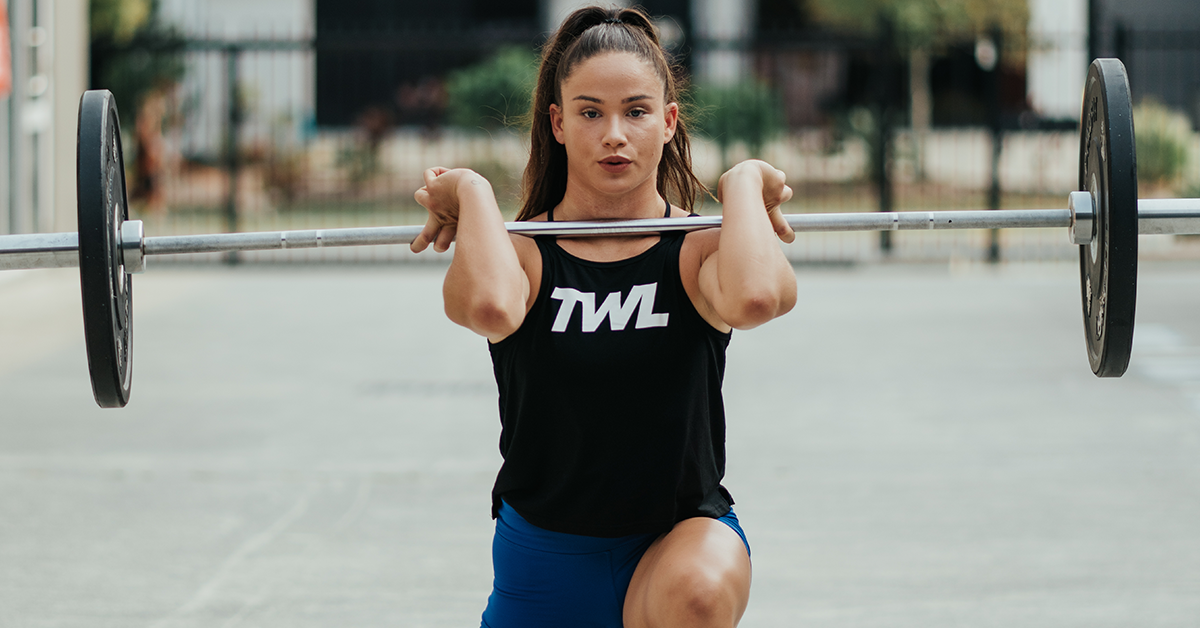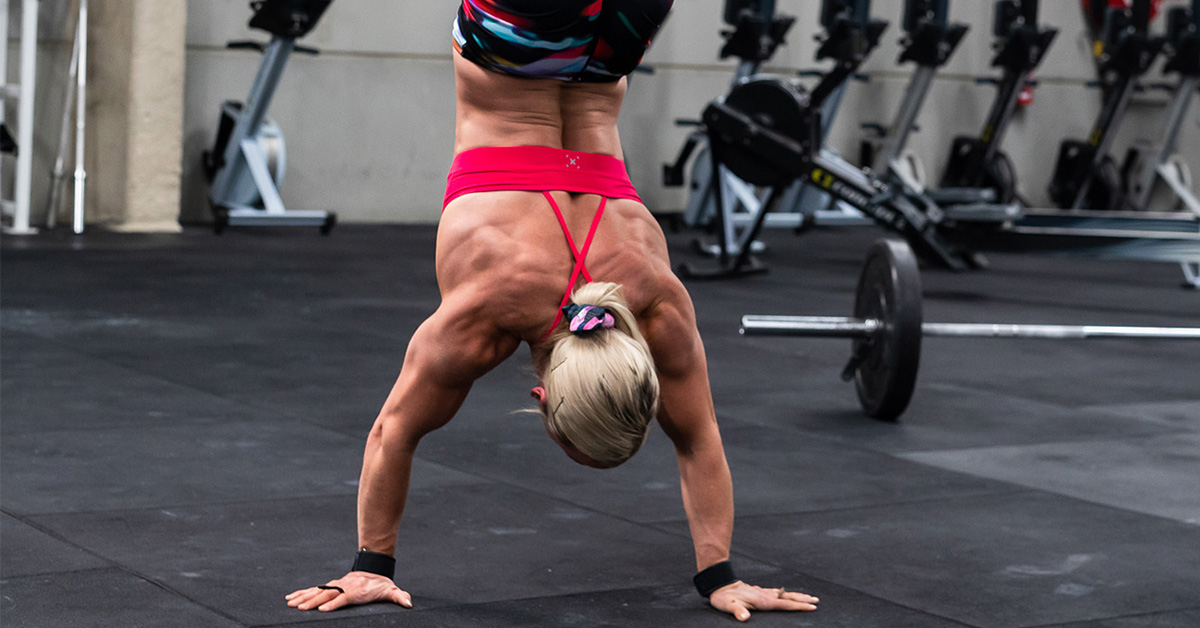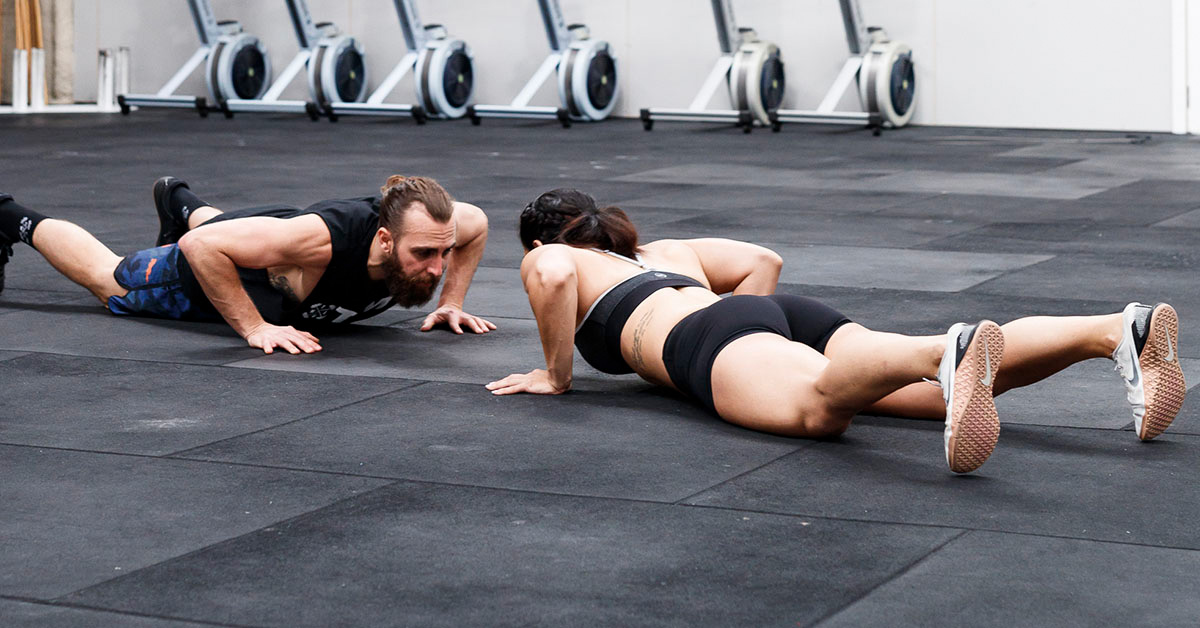The handstand push-up is undoubtedly one of the hardest movements to master in functional fitness. Aside from having to overcome the fear of flipping yourself upside down against a wall, it requires an absurd amount of upper body pressing strength to complete. Thankfully, just like any movement in the sport, if an Rx’d HSPU isn’t in the cards for you, there are always options to develop the necessary muscles and start you down the path to your first rep. Here are five ways to scale handstand push-ups.
Shop Now
5 Ways to Scale Handstand Push-Ups
1. Handstand Holds
Perhaps one of the most overlooked ways to scale HSPUs is to actually get against the wall and do a handstand. Building isometric strength while you’re inverted helps fortify the foundation necessary for HSPUs. Doing HS holds will undoubtedly fire up the muscles in your back in no time.
It also helps eliminate some of the fear that some athletes may have of going upside-down. Athletes that struggle with getting onto the wall can scale by kicking up to the wall, doing a short hold – something like three seconds – and then kicking back down and repeating. This is a great confidence booster as well as a strength prerequisite.
2. Dumbbell Z-Press
The dumbbell z-press is unparalleled in its ability to develop the strength necessary for HSPUs. The movement begins with the athlete seated on the floor with their legs outstretched in front of them. From here, with the dumbbells on their shoulders, the athlete presses up and overhead while trying to maintain a neutral spine. This movement can be completed with dumbbells or kettlebells.
The reason this movement is my go-to scale for athletes trying to develop the necessary pressing strength for HSPUs is that it requires a stable trunk before pressing – just like in an actual HSPU. Pressing from a broken position does nothing except make the movement harder.
Because of the nature of the position you are pressing from, the z-press forces the athlete to press from a stable position – not to mention pressing two dynamic objects overhead adds another sprinkle of spice to the mix. The z-press is a must if you lack the pressing strength for HSPUs.
3. Pike/Box Push-Ups
Pike or box HSPUs are a great way to practice getting inverted and developing some pressing strength in that position. The beauty of the pike or box HSPU is that while, yes, you are working on pressing in a position similar to that of an HSPU, you are doing so with a reduced load.
When completing an Rx’d HSPU, the athlete is forced to press up their entire body weight. Meanwhile in a pike or box HSPU, because the athlete is hinged at the hip with their feet on the ground, they’re only required to press their upper body up, therefore requiring less pressing strength to complete the rep. This is a great way to practice the movement without being required to press your entire body weight.
Another benefit of the pike or box HSPU is it affords the athlete the opportunity to practice the mechanics of the HSPU. When we descend into the bottom of an HSPU, we are looking to create a tripod position with the hands and head. Oftentimes, we see newer, less experienced athletes reach the bottom position with their head in line with their hands or, even worse, with their head before their hands and closer to their feet – forming an upside-down triangle.
The pike push-up allows for the athlete to focus on form without having to worry about that extra load.
4. Eccentric HSPU
In general, eccentric work is a great way to build strength for any gymnastic-type movement – or barbell movement, for that matter! Eccentric refers to the lowering phase of the exercise. For HSPUs, that means the descent to the floor.
Even if you are unable to press yourself back up, if you are able to lower yourself under control with a tempo and not just pile drive the floor, we can work the muscles necessary to complete the HSPU. The key here is control.
The repetition needs to be done with a purpose. Eccentric reps shouldn’t be rushed but completed with intention and safety in mind. Also, because your muscles aren’t capable of completing the concentric part of the movement (the pressing up), it places a lot of strain on those muscles. Strain isn’t inherently a bad thing – it’s what needs to be done to build muscle – but too much of a good thing isn’t really a good thing. Eccentric work should be done in a limited volume.
Note: You can do these facing the wall or facing away.
5. Partial ROM HSPU to an Abmat
Finally, we arrive at a partial range of motion HSPU. It’s a fan favorite for most athletes because it lets you feel like part of the gang: up on the wall, inverted with the rest of those CF ninjas, feeling like a badass. However, sometimes, for the sake of their athletic development, athletes need to reel in their partial ROM work until they’ve developed a stronger foundation.
Now, that’s not to say that this scale-down doesn’t have its place – it does. But if you have three abmats stacked under your head and your partial range of motion looks more like an elbow twitch than a press, then we might have a problem. If that’s the case, the athlete needs to take a step back and work on some full range of motion pressing in the form of a z-press or pike push-up before making their way back onto the wall.
For those athletes with the adequate pressing strength to almost do a real deal HSPU, the partial ROM HSPU is a great tool. The reason is that we can adjust the scale as the athlete develops strength at a particular depth.
Let’s say an athlete struggles with two abmats. They practice to that depth and over time, two abmats becomes a joke. Time to make it harder. By removing one abmat and leaving them with a single abmat or an abmat with a metal 5lb plate underneath, the process starts anew. You can continue this pattern until the athlete is comfortable and strong enough to make it all the way to the floor.
















